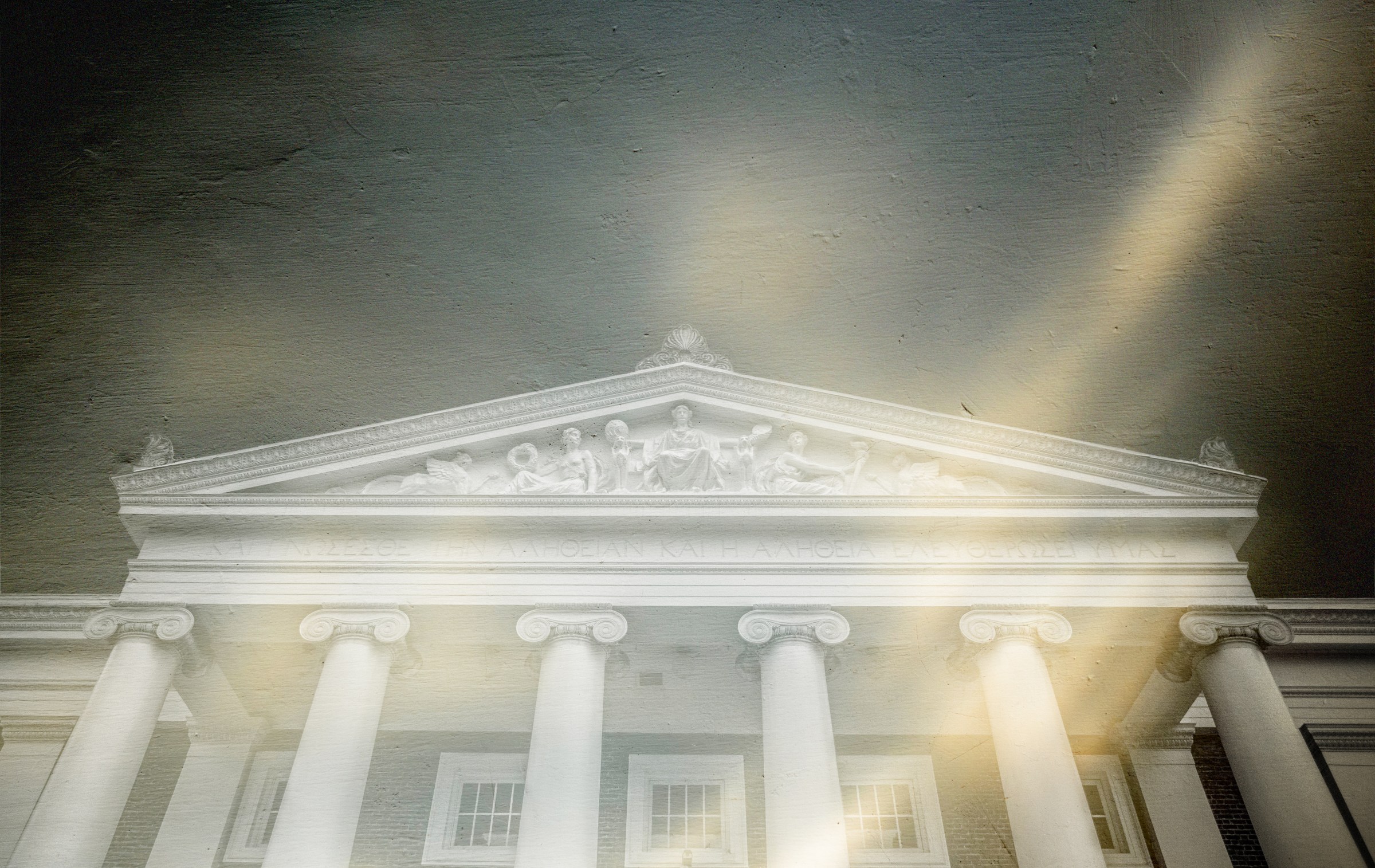Turn any article into a podcast. Upgrade now to start listening.
Premium Members can share articles with friends & family to bypass the paywall.
With students returning to campus and activists vowing to ramp up controversial demonstrations, the clash between civil rights claims and various freedoms—of speech, association, academic pursuits—will once again make news. So will the Trump administration’s ongoing campaign to stamp out concomitant discrimination against Jews and Israelis.
These battles will illuminate, for those who can bear to see it, an unavoidable general truth about our civil rights regime. Our civil rights laws, codified primarily in the Civil Rights Act of 1964, have always been in tension with the Constitution. That does not mean they are categorically unconstitutional. But civil rights law’s demands do test the First Amendment’s boundaries somewhat regularly. Imagine a professor repeatedly using racial slurs in class. Does that constitute de facto discrimination against minorities? Perhaps it depends on the context. But no matter where it lands, a court adjudicating a civil rights complaint will have to decide where freedom ends and a proscribed harm begins. And courts have done so for decades, developing a web of doctrines to navigate these thorny issues.
There is no scandal in this fact. Civil rights law is hardly unique for it: Laws regulating defamation, harassment, and incitement do the same thing. So do laws regulating firearms, rules delineating what “due process of law” applies in certain situations, and so on. Courts have to figure out whether, to what extent, and in what circumstances, the public interest justifies limiting constitutional rights—even speech and expression.
But in the context of civil rights enforcement the mundane inevitability of tradeoffs can be hard to accept, because civil rights law and the First Amendment are probably the two laws held most sacred in contemporary American culture. Accepting that they do not easily fit together and frequently require compromising each one’s core principles on behalf of the other’s is a bitter pill.
For the past several decades, that pill has not been so difficult to swallow: These tradeoffs were acceptable, or at least manageable. That all changed in 2025, when President Donald Trump’s administration pressed the civil rights regime to mean what it says—and say what it means.
The Civil Rights Act establishes the principle of non-discrimination in nearly every aspect of American life. Title II outlaws discrimination based on race, color, religion, or national origin in all establishments open to the general public. It is what makes it illegal for restaurants and hotels to refuse service to black people, Irish Americans, or Muslims. Title VII does the same for employers, while including sex as a protected category.
But the main flashpoint for recent controversies has been Title VI, which makes it the “policy of the United States that discrimination on the ground of race, color, or national origin shall not occur in connection with programs and activities receiving federal financial assistance.” As courts have made clear since its ratification, Title VI protects against more than the overt discrimination of “minorities not welcome here.” Viewing the fight for civil rights as a crucial social goal, courts (and the federal government) have developed doctrines pursuant to Title VI that punish employers, universities, and other institutions that respond inadequately to discrimination or harassment occurring under their aegis.
Now, the government can sue academic institutions under Title VI for just about anything. In 2022, for instance, the federal government threatened to sue a Texas school district over a rule requiring parents to present Social Security cards as part of the student-enrollment process. Though Texas claimed no family had been denied enrollment because there were alternative procedures available, the government insisted that the policy likely deterred immigrants from trying to enroll in the first place, amounting to a “disparate impact” on non-citizens due to their (non-American) national origin.
This is one example of a massive federal bureaucracy charged with sniffing out and snuffing out discrimination in institutions that receive federal aid of any kind. Sometimes the subtler forms of hostility that give rise to Title VI claims take the shape of policies, such as universities’ use of “personality scores” to disadvantage Asian American applicants. When the Supreme Court ruled such programs illegal two years ago, universities vowed through gritted teeth that they would comply, though administrators clearly were not happy. For the most part, though, they did not condemn the anti-discrimination principle of civil rights law outright.
Now, however, that bridge has been crossed. The precipitating cause is the Trump administration’s effort to hold universities responsible for tolerating—whether as a matter of policy or not—expression and conduct that amounts to hostility against protected classes. The federal government revealed that there is no civil rights consensus at all, using the perfect vehicle to prove it: discrimination against Jews and Israelis.
It did so with significant help from Harvard. A standard bearer in American education and culture, Harvard has led the charge in resisting the Trump administration’s purported effort to enforce Jews’ and Israelis’ civil rights by threatening to revoke federal funding from universities taking insufficient action to remedy such violations. It has even brought the collision of civil rights and the First Amendment into sharp relief by suing the government for, inter alia, infringing its rights to conduct its affairs freely. While that suit has succeeded thus far on largely procedural grounds—the Trump administration did not follow the prescribed steps for enforcing civil rights law—Harvard has also asserted that the administration has overstepped on the underlying substance by meddling in the university’s internal affairs.
Behind the Harvard legal drama is a backdrop of an admittedly toxic campus culture of discrimination against Jews and Israelis, both protected groups under Title VI. A university-commissioned report called the situation of Israelis at Harvard “dire.” In contrast to the theoretical chilling effects on school enrollment in Texas, the Harvard Task Force on Antisemitism found that “Jewish students told us they turned down offers of admission at Harvard Schools” while “Jewish students completing PhDs … decided to leave for private industry” because their campus was “unfriendly to Jews.” The report tied the hostility to classroom instruction, among many other sources: “the failure of some of our instructors to teach about Israel/Palestine with academic breadth and rigor” is “shameful.” One example was a “Pyramid of White Supremacy” from a required Harvard School of Education course that accused anyone opposed to divesting from and boycotting Israel of “coded genocide.”
At no point during all of this has Harvard denied that it has a problem. In fact, it has acknowledged it repeatedly. President Alan Garber, calling antisemitism “one of the most insidious forms of bigotry” that warrants “urgent action,” admits that “it is present on our campus,” which he knows firsthand because, among other evidence, he was depicted in an anti-Israel encampment as a horned demon.
Yet the stance Harvard has adopted and modeled for the rest of the nation illustrates the civil-rights consensus’ collapse. While admitting that his campus had an unresolved discrimination problem, Garber nevertheless led a rhetorical charge to insulate his campus from federal oversight. “No government—regardless of which party is in power—should dictate what private universities can teach, whom they can admit and hire, and which areas of study and inquiry they can pursue,” he wrote in a statement echoed by fellow academic leaders. Former Harvard President Larry Summers decried the notion that “the federal government [can] make a demand that it be involved in the review of who’s going to be a professor at Harvard and who isn’t. That’s just not the way we do things in the United States.” Harvard professor Steven Levitsky added that “the government is demanding the right to dictate to a private university who it can hire and not hire and effectively what it can teach and cannot teach. That’s the end of academic freedom. That is completely incompatible with a democratic society. And I know of no democracy that’s ever permitted that sort of intervention.”
Except, there is at least one democracy that has long given the government the right to meddle in universities’ internal affairs if the school fails to uphold its civil rights obligations: The United States.
Civil rights law has always empowered the government to threaten academic institutions with loss of public support if those institutions hire people who foster discrimination or teach in ways that do the same. It has simply been a very long time since Americans have paid attention to documented instances of students, professors, and administrators engaging in blatant discrimination.
If discrimination emanates from the classroom, as the Harvard Task Force found, the federal government is empowered to demand that the university fix it—or suffer the consequences. This would be obvious and uncontroversial if a university’s department of Whiteness Studies taught about the evils of African migration to Europe, hiring professors and admitting students with demonstrated records of calling for black people to go back to Africa. The university could invoke the force field of academic freedom, but would soon be reminded that academic freedom, like the protections of the First Amendment, has long been so limited.
In other words, the threat to these freedoms does not come from some diabolical twisting of civil rights law—it comes from the law itself. That fact has led those who sympathize with Harvard to adopt a well-worn line popularized by opponents of civil rights law per se. “Can we just let private institutions admit and hire the people they want to admit and hire,” asked writer James Surowiecki, “instead of having the government dictate to them whom they have to accept?” The answer is no, not since 1964. About a week later, 14 members of Congress wrote to Harvard, denouncing “attempted interference by the President and his administration in the governance of independent institutions, including universities.” The lawmakers went on to reject the government’s role in enforcing civil rights law in one blithe sentence: “If these actions are rooted in students’ concerns of legal compliance with civil rights law, any settlement must be with those students individually or as a class, not with a federal government bent on imposing its political will on universities.”
Such an imperative would come as a shock to the myriad institutions that have faced Title VI investigations in recent decades—sometimes initiated by the government on behalf of purely theoretical victims, as in the Texas example above, or the school district in Colorado forced to overhaul its disability accommodations evaluation procedures because “students of color with disabilities are overrepresented within the population of students identified as eligible” for additional services (though no potential recipient claimed to have been treated unfairly in the process). Nobody batted an eye at the government’s involvement, or even that the government could dictate the terms of eventual resolution agreements. That is simply how Title VI enforcement has always worked.
Harvard is left with two moves: deny that discrimination runs rampant on its campus or deny that Jews or Israelis are protected by law. It denies neither. Instead, it has adopted the rhetoric of complete opposition to civil rights law. Why? Maybe it’s an impulse, a ploy to win the sympathy of Americans who see Trump as a tyrant, or a last-ditch effort to save its reputation. The bigger question is: Why have so many elites and self-described liberals followed, failing to hear how they echo mid-20th century resistance to the civil rights revolution?
In actuality, there are two conceptions of civil rights in this country. One is the official explanation for civil rights law, which is that it rests on an anti-discrimination principle. The other—the shadow one, but the one whose hegemony explains the current uproar over the clash between Harvard and the feds—is that civil rights rests on a remedial principle. That is, it exists to remedy historical mistreatment and resulting disparities.
The shadow conception follows familiar logic. The Civil Rights Act passed primarily to help black Americans, because that is the group that suffered the most prolonged and destructive mistreatment in the United States. Rather than protect all people against discrimination due to unchosen characteristics, it is meant to focus on rooting out discrimination against the groups that Americans have historically treated the worst.
Women and other ethnic minorities deserve protection, too, because they have historically received unequal treatment. The remedy for discrimination, in this view, is not to adopt a broad anti-discrimination principle but to establish special protections for groups that continue to struggle in aggregate; this need not entail affirmatively engaging in preferential treatment (though it often has), but construes civil rights law as only applying to marginalized groups, or those that continue to suffer subpar outcomes at the group level.
This conception helps explain how civil rights law has been deployed for decades without drawing a peep from Garber, Surowiecki, and their ilk—penetrating, powerful, and highly protective of some groups, at times by countenancing narrowed freedoms of expression and association. It overlapped with, and drew plausible deniability from, the anti-discrimination conception of civil rights, though it disturbed some observers by penetrating farther into private spheres than was obviously necessary. So even as a few conservative and libertarians decried the use of civil rights law to hold supervisors and administrators liable for permitting arguably hostile environments, they were the exception that proved the rule, and the appearance of consensus began to form. Everyone, left, right, and center, was on board with civil rights enforcement, even as it could intrude somewhat on some rights and freedoms—even academic freedom, and the right of universities to hire and admit whomever they please.
The illusion of consensus persists where the remedial and anti-discrimination theories point in the same direction—in other words, where the suffering group is historically disadvantaged. If universities had Whiteness Studies programs as described above, everyone would agree that the federal government would be within its rights to force universities to root out that racism on pain of losing federal support. The worst offenders could even see their tax-exempt status revoked.
The problem is that the two justifications for our civil rights regime are actually incompatible, even if they occasionally work in tandem. To the anti-discrimination crowd, treating someone unequally because of an immutable characteristic is a logical error leading to a moral affront. Enshrining the principle of equality thus presented a compelling public interest that could warrant limiting freedoms of speech and association if those freedoms were used to assault individuals’ dignity on account of their unchosen characteristics. But to the reparative or remedial school, civil rights law justifies infringing those rights to foster equality between groups. Any use of civil rights law that did not foster greater inter-group equality—or threatened to worsen it—would be a perversion of the law.
No group exposes the rift between the anti-discrimination crowd and the remedial crowd quite like Jews.
Jews do not lag behind other groups in income, educational attainment, or other socioeconomic outcomes. On the contrary, Jews have succeeded greatly in the United States, on average, despite being persistent victims of discrimination. A century ago, elite universities established quotas to keep the number of Jews in their ranks down. The Jewish state of Israel has become rich and powerful despite facing constant attacks from annihilationist neighbors and a decades-long delegitimization campaign. Today, Jews are the targets of hate crimes in obscene proportions, especially in large cities like New York. And on campus, as Harvard and many watchdogs have long noted, Jewish students have faced harassment in the language of anti-Israel activism, mock “eviction notices” placed on students’ dorm room doors, and the strange persistence of classically antisemitic imagery.
To the anti-discrimination camp, this is as much an affront to human dignity as any other form of prejudice. Even treating Israelis unequally on the basis of their country’s prosecution of the ongoing war in Gaza violates the anti-discrimination principle. Israelis don’t choose where they were born; you can’t treat them worse because they are Israeli, even if you have good reason to dislike the state of Israel.
To the remedial camp, though, turning civil rights law against anti-Israel demonstrators is “weaponization.” Anti-Israel activists speak for the downtrodden; Israelis are powerful. Jews don’t need help or protection of law, because they do not suffer “systemic” oppression. That doesn’t mean Garber and those who echo his rhetoric believe Jews deserve no civil rights protection. But it means they would rather roll back civil rights law enforcement significantly when it applies to Jews and collides with other freedoms.
The two views are irreconcilable, and apparently neither one maintains the cultural consensus the former did in the aftermath of the civil rights revolution. That does not mean they are equally legitimate. The anti-discrimination principle is the one written into our law, and which passes constitutional muster under the Equal Protection clause. It is the one that justifies limiting the freedoms of speech and association, and provides guidance as to where the lines between protected speech and unprotected discrimination are drawn.
If we no longer have a consensus on the antidiscrimination principle written into the Civil Rights Act, perhaps it is time to consider following the emergent consensus’s lead: repealing the law and reverting to the pre-1964 status quo. We could “let private institutions admit and hire the people they want to admit and hire.” If advocates of the remedial view believe their view has popular support, they can try to pass a law—a constitutional amendment would likely be necessary—that says what it means.
This is not as radical as it sounds. The truly radical thing is to leave a shadow civil rights regime in place for future governments to use despite knowing that it never passed into law. If we had a consensus about what our civil rights laws meant, we could preserve a robust anti-discrimination principle that protects all covered groups equally, even when doing so conflicts with other political commitments. This would mean accepting that civil rights law sometimes narrows the outer bounds of free speech and academic freedom, a bitter but swallowable pill. Or we could abandon the pretense of universal anti-discrimination and openly embrace a system of selective enforcement based on which groups deserve protection, while others have their interests subordinated to freedom of inquiry, speech, and association.
For now, we have neither—just one law on paper and another in the shadows. The implications of that revelation extend far beyond the campus.







Please note that we at The Dispatch hold ourselves, our work, and our commenters to a higher standard than other places on the internet. We welcome comments that foster genuine debate or discussion—including comments critical of us or our work—but responses that include ad hominem attacks on fellow Dispatch members or are intended to stoke fear and anger may be moderated.
With your membership, you only have the ability to comment on The Morning Dispatch articles. Consider upgrading to join the conversation everywhere.